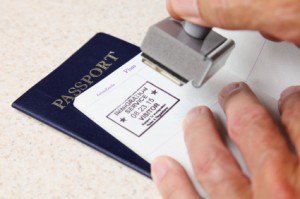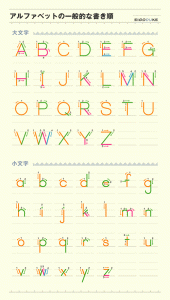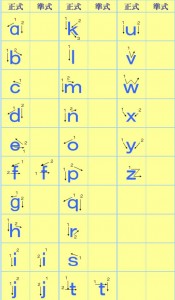PRESENTATION 6th Annual Shikoku JALT Conference
I had a great time at the Shikoku JALT Conference in Tokushima yesterday. Great crowd, some interesting presentations, and a nice dinner to finish off.
As promised, here are the slides from my talk: 1506 JALT Shikoku
Hope to make it back down here sometime for a bike tour of the island!
PRESENTATION 6th Annual Shikoku JALT Conference -Tokushima
I’ll be giving a presentation tomorrow at the Annual Shikoku JALT Conference in Tokushima. Details are here.
My presentation is at 13:50 in room 302, on Integrating Presenting Skills into the Classroom. Very meta indeed.
Hope to see some of you there.
Sponsoring a Teacher Visa in Japan Part 1
This year the language school I help out at is sponsoring a teacher for a visa for the first time. So far we have always managed to hire people who already had a visa, but we found a great teacher who’s a JET until August and would like to work for us after that.
Unsure of the process, I reached out to school owners on the ETJ Owners List (the best resource for advice on running a language school in Japan).
Many people replied. This seems to be a popular topic, or one that people feel strongly about. The main takeaway was that there does not seem to be a standard application or guidelines: the process appears to be at the discretion of the immigration officer that deals with your case. I received the following advice:
- Hire an immigration lawyer, or
- Have a Japanese native speaker call to inquire (otherwise you may be accused of misunderstanding the officer’s Japanese and sent home to get more documents)
- Don’t ask questions or argue; just do whatever they say
- Call back another day to try to speak to another person if you run into a difficult officer
- Go to another immigration office if necessary(!)
Pretty grim stuff, but more or less what I was expecting. The lack of consensus on required documents, etc. was a bit worrying. I also had a look at some immigration lawyer websites (easy to find in English through a quick web search) and found that the following would probably be necessary:
- Company documents, including tax statements (this might be a problem as the school is not a company but held by private individual)
- Documents relating to the position (salary, duties)
- University diploma
We then contacted our local immigration office to start the process (a Japanese staff member made the call).
We were told that the school would have to prepare various documents, and the applicant would also have to prepare various documents. The applicant would then bring everything to the immigration office and make the application.
School documents:
- Copy of school financial information
- Proof of school activities (like a pamphlet)
- Teacher contract
Teacher documents:
- Photograph
- University diploma
- Resume/CV
- Passport
- Residence card
We also found some information on the Ministry of Justice’s website, including the application forms (the one to change to Specialist in Humanities is number 8), and the requirements.
The next step is to put the documents together and brave the dragon’s den along with our new teacher. I’ll write it up in Part 2 later this month. Is it just me, or does this all seem too easy?
Teaching alphabet stroke order and stroke count to Japanese children
Not as clear as it first seemed
I’ve also been meaning to write this post for a while
A couple of years ago it came to my attention that some of our students were being told by their elementary school teachers and junior high school teachers that they were writing English letters wrong.
After an initial reaction of annoyance (this seems to be a perennial problem with some teachers who don’t have the confidence to deviate from the one correct answer given by the textbook), I decided that it might be better to find out what the official ‘stroke order’ for the alphabet in Japan is and make sure our students know it.
I have done some quick research and there doesn’t seem to be any official stroke order. I found the following two online:
This is from Nintendo
And this is from GakuryokuUp.
As you can see, they are slightly different (lower-case w, for example). Presumably the teachers are going off whatever textbook they are using in class, and are so insecure that they won’t accept alternatives.
Which kind of takes us back to the beginning. I guess we just need to teach our students that there are different ways of writing letters, and some of their teachers in the future are going to be particular about how they are written in their class. Always do things the way your current teacher wants you to, even if they are wrong (like the ALT who told one of our students that the only correct response to ‘how are you?’ is ‘I’m fine, thank you’).
Any experiences with teaching letter-writing?






